H o m e | 1 6 0 0 s | 1 9 3 0 s | 1 9 7 0 s | 1 9 9 0 s | FAQ
Introduction |
First Appearance |
Materials Used |
Designers |
Asian Styles |
Fetish Shoes
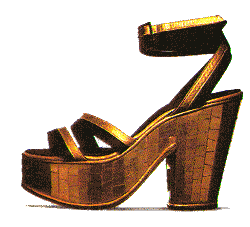
Salvatore Farragamo, 1935 |
IntroductionBetween the 1600s and the 1930s platform shoes lost their extreme popularity. The Victorian era decided that women's shoes should be small, and feminine, which held no place for the chunky platform. But the fashion world was now strolling into the industrious 20th Century and the Victorian dress stuck out. Hence, by the 1930s, new, more convenient styles were emerging, especially during the World War II years. It was in the late 1930s that the platform shoe reappeared. This era was practical in the shoe's construction and modest in style. The notable fashion designers of the day, however, had a different vision and created more adventurous platform shoes.-top- |
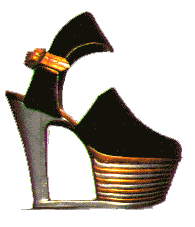
designed by Salvatore Farragamo for the stage, 1938 |
First AppearanceI read about many different official dates for the premier appearance of the elevated sole in the 1930s, but it is undisputed that the platform shoe was first popular as a cork-wedged heel, shaped much like the shoe to the right, but without a distinctive heel. It is just an elevated sole with the toe lower than the heel of the foot.-top- |
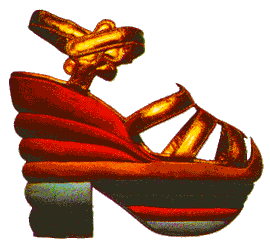 Salvatore Farragamo, 1938 |
Materials UsedShoes were made primarily of wood and cork during the late '30s and early '40s due to the lack of leather and the war ban on rubber.1 Wood never matched the popularity of the cork sole; it proved to be quite heavy and burdensome. Women strolled the beaches with cork wedged sandals as they proved the beach was one of the most popular places to wear a platform shoe.2-top- |
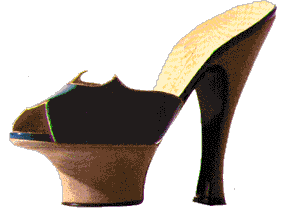 Andre Perugia, 1939 |
DesignersSome of the major shoe designers of the period were Salvatore Farragamo, Andre Perugia, and David Evins. Each contributed something unique to the platform shoe sensation of the 30s. Andre Perugia, for instance designed this platform shoe with gasps and wide eyed responses from the public3. It was revolutionary in design. It certainly looks different. Most of the women wore heels with subtle platforms, maybe 1 inch at the most, and with such styles as these, new rules were broken that set the grounds for the adventures of the 1970s.-top- |
Asian StylesConcurrent to the platform sweep in Europe and the US, Asia already employed the use of platform soles for a long time throughout history. Mainly during the 1950s, shoes like these were worn by girls in Japan when going to temples.4The Japanese clog, or "geta," was typically about 3 to 4 inches high. Like the picture, straps held the shoe to the foot. This kind of shoe is usually worn with "tabi," something like what we would call a sock. The Chinese had a similar clog. Much like the chopines of the 1600s, it had a very deep sole. Usually made from wood, the Chinese, like the Japanese, fancily embroidered and decorated the shoe.5 |
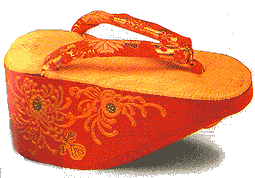 Japan, 1950s |
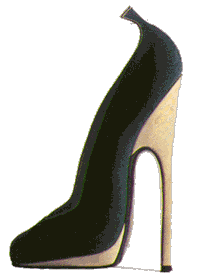 Andre Perugia, 1948. |
Fetish ShoesFetish shoes were beginning to mark a recognition in the minds of those who worship shoes and feet. I had thought that shoe/feet fetishes were attributable to more recent decades, but even back in the 30s an extremely high stiletto heel and a platform sole were adorned by worshipers.-top- |
Almost every woman
is not only conscious of her feet,
but sex conscious about them.6
-Andre Perugia
H o m e | 1 6 0 0 s | 1 9 3 0 s | 1 9 7 0 s | 1 9 9 0 s | FAQ
email me
URL: http://geocities.datacellar.net/platform_diva